Window Grids or No Grids? A Guide to Grille Styles & Trends
Posted
on June 1, 2021
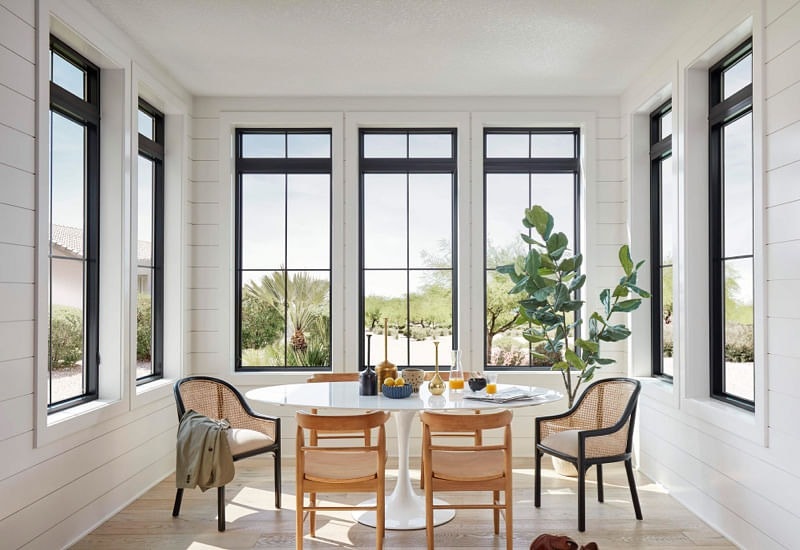
Window grids once served a crucial purpose: they held together multi-paned windows. This made it possible to ship window panes further without fear of breaking the glass.
Today, window grids (also known as grilles or muntins) are largely decorative. So the decision to go with grids or without them is all about aesthetics.
Window Grid Styles Match Home Styles
The best case for grids is to match your home’s style. Architectural styles are defined by a number of core characteristics. Even something as seemingly small as a window grille pattern is often associated with a specific style of home or architectural era.
There’s a wide variety of window grid patterns. You can even customize your own if you’d like. The most popular styles can be traced back to the architectural era where they originated, but are still commonly found in older homes or new builds of many styles.
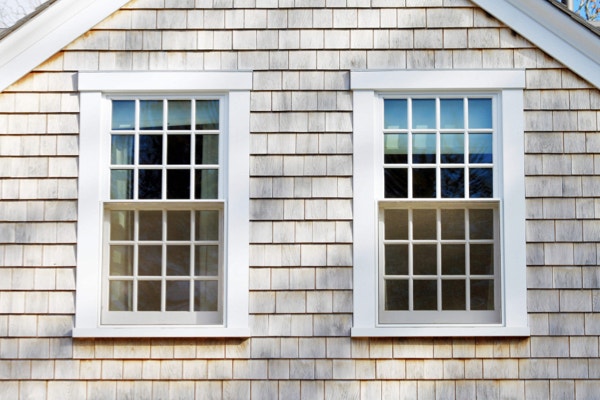
Colonial Grid Windows
Colonial style is all about symmetry. The home is rectangular and has the same number of windows on both sides of the entrance and both the first and second stories.
The sash of double-hung windows provides a similar symmetry to the glass. The grids of Colonial windows are most often the same on both sashes. Typically, that’s six square or rectangular grids dividing each sash, which is known as a six-over-six window. Nine-over-nine windows, where the grid pattern has nine square grids, is also common. When the sashes don’t have the same number of grids, the top sash has more grilles than the bottom.
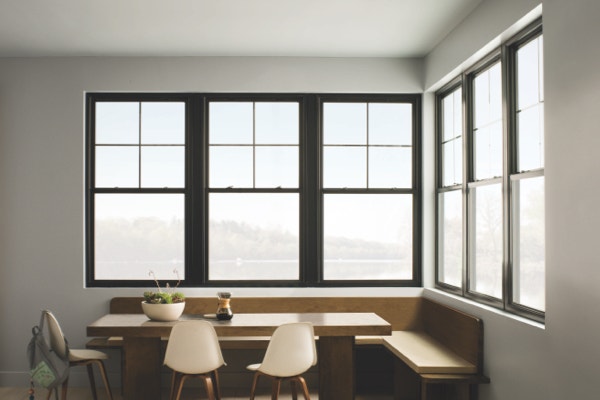
Craftsman Window Grids
Craftsman homes use double-hung windows in a similar fashion. But grids are only used on the top sash — the bottom is unobstructed. Either four or six rectangular grids are used on the top sash of Craftsman-style windows. In window combinations, a transom window with square grilles spans the top of the other windows.
Craftsman bungalows are an offshoot of the Arts and Crafts movement. While many characteristics are the same, the window grille patterns differ. Bungalow-style windows have fewer grids. They are either elongated on the top sash or are used in a row of small squares across the top of the window. Alternatively, some bungalows have Prairie-style grids on their windows.
Prairie Grid Windows
Prairie-style window grids are quite different from the rectangular, symmetrical look of Craftsman and Colonial styles. The grilles overlap and run along the edge of the glass, leaving more of the window unobstructed. This grid pattern often leaves small squares in the corners of the window.
Casement windows are the predominant windows used in Prairie-style homes. With no sashes, they maximize the light and unobstructed space. Sliding windows featuring the same Prairie grid pattern on both sashes are commonly used. They look like a combination of two casement windows but offer different functionality.
Victorian Style Windows
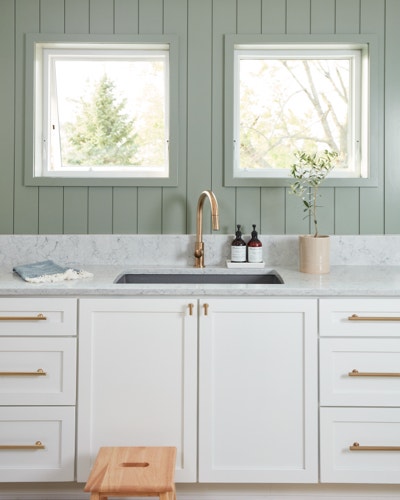
Farmhouse Windows
Farmhouse style is built around function but doesn’t lack character. Groups of large windows — often awning, single-hung or double-hung — maximize the natural light and allow for ventilation.
Farmhouse window trim is chunky and the window grilles are simple. One muntin divides the sashes, creating a classic four-by-four pattern. Two-over-one windows are also common, with a single grille on the top sash and none on the bottom.
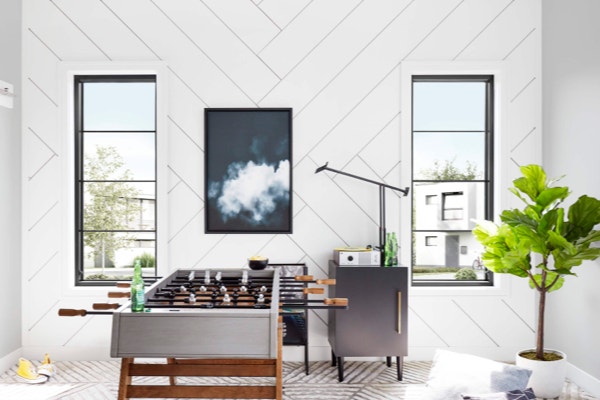
Gridless Windows Fit Modern Trends
Since traditional windows used grids in various ways, it should be no surprise that modern windows went in the opposite direction. Modern style has been around for decades. But with the vast majority of homes built in more traditional styles, many homeowners still yearn for the simple yet unique look of modern design.
Modernism means minimalism. The windows are sleek with thin frames and no grids. The window trim is very thin to make the glass and the sash as big as possible. Many homeowners don’t even dare obstruct their big, beautiful windows by using window treatments!
Modern homes have large, floor-to-ceiling windows that create a wall of glass. When window grids are used, it’s to make a large pane of glass look like a combination of windows or to create a focal point by adding strong, straight lines to a circle window or special shape window.
Removable Grilles Give You Flexibility
It can feel like your whole window replacement project hinges on the “grid or no grid” question. After all, you don’t want to make a decision that affects multiple windows and then have second thoughts after installation day.
Removable window grids attach on the roomside of the glass. They not only make for easy cleaning but also let you switch up your style. When you’re on the fence about window grilles, or aren’t sure which pattern you prefer, removable grids provide the flexibility to take back your stylistic choice at no extra cost.
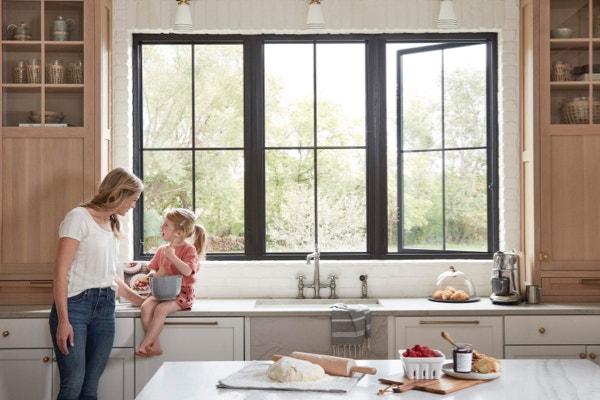
Guidelines for Going with Window Grids or Not
Choosing between window grids and gridless windows is not an either-or decision. You can have both! Not every window in your whole home has to look exactly the same. In fact, many homes have a mix of gridless and grid windows. To get the right balance of window grilles for your home, follow these guidelines.
1. Consistency is key.
Too many grille patterns will distract instead of enhance your home’s style. You want a unified look. Use the same grille pattern for windows on the same floor or side of the house. Many homes use the same grille pattern on all front-facing windows to boost curb appeal but leave windows on the back of the house unobstructed to emphasize the surrounding scenery. If you’re replacing a single window, follow the style established by the others unless it’s a focal point.
2. Consider the size and type of window.
Grids make a large window look like several smaller ones. Small windows with grilles may feel too cluttered or obstruct too much sunlight. On the other hand, large picture windows are a focal pointand are often meant to maximize sunlight and showcase the outdoors. Go gridless or with a pattern that only goes around the perimeter, leaving more glass unobstructed. If you have flanking windows, that’s a better spot for styling with grilles.
3. Complement with color.
Yes, there’s more to decide than just the grille pattern. Window grids can be stained or painted a variety of colors. The exterior window grid can be a different color than the roomside one. Choose colors that match your home’s color palette. Match the color of the window frames or choose a contrasting color for a bold look.
The types of window grids, patterns, interior colors and exterior colors differ between window manufacturers. So be sure to consult your local window and door expert about available window grid options and the trends shaping your city.
Schedule a free consultation to find windows and doors for your home.
